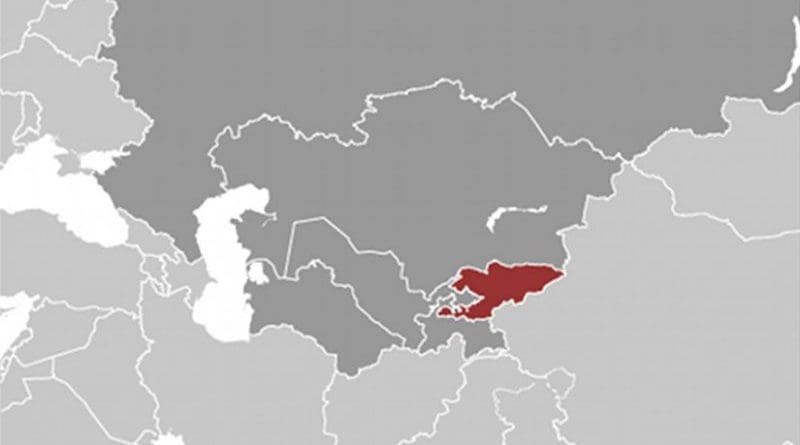Kyrgyzstan: Familiar Dance Continues Over Manas – Analysis
Earlier this month, a senior Kyrgyz defense official insisted that US military could not use the Manas air transit centre for any military mission after its current lease agreement with Bishkek expires in 2014. Bursurmankul Tabaldiev, secretary of the Kyrgyz Defense Council, pre-empted his meeting with US Defense Secretary Leon Panetta in the Kyrgyz capital with the declaration.
Panetta attempted to tamp down expectations that the lease would not be renewed by thanking Kyrgyzstan for its valuable role as a strategic partner in Central Asia. He also tacitly pushed back by conveying his gratitude to new Kyrgyz President Almazbek Atambayev for his “continued support for the transit centre at Manas.”
This is not the first round of diplomatic musical chairs over Manas. In 2009, Washington and Bishkek were at loggerheads over Kyrgyzstan’s threat to evict the US from the base. The fracas was resolved only when the US agreed to more than triple its rent payments to Bishkek (to $60 million from $17 million) and acquiesce to Kyrgyz demands that the facility in Manas be renamed as an “air transit centre” to quell local concerns that the US was outsourcing its Afghan war efforts through Kyrgyzstan.
Kyrgyzstan’s most recent stance is not startling. However, it is more nuanced than it was back in 2009 as Bishkek is facing an increasingly complex geostrategic future in Central Asia. While Kyrgyzstan remains in Russia’s sphere for the most part, it continues to be wooed by the US and China. In fact, the US presence at Manas continues to be a thorn in its attempts to achieve a “reset” with Russia. Moscow also undoubtedly used its leverage to persuade Kyrgyzstan to take such a hardline against Washington in 2009. The fact remains that the air transit centre in Manas is one of the only reliable supply routes left for the US after its troops draw down from Afghanistan in 2013 and 2014. The southern supply chain, from Pakistan, has become increasingly muddied as traditionally opaque relations between Islamabad and Washington have descended to their nadir since the killing of Osama Bin Laden in Abbottabad last year.
On the other hand, China views increased engagement with Kyrgyzstan, as well as its other Central Asian neighbors, as a key element in its tacit strategy to hedge competing influences from other regional players such as Russia, India and the US. This has resulted in enhanced cooperation between China and Kyrgyzstan on issues such as combating regional terrorism. China is especially concerned about Uighur militants in Xinjiang province and continues to pressure its western neighbors – including Kyrgyzstan – to clamp down on their transnational connections. Bishkek is wary of being labeled by Beijing as a base for militants, specifically ones from the East Turkistan Islamic Movement (ETIM) who China claims have been trained in jihadi camps in northwest Pakistan. Chinese trade with Kyrgyzstan has surged and increased five-fold since 2004. There have also been discussions about China establishing free trade zones in Xinjiang – including Kashgar – to increase trade and cooperation with Kyrgyzstan.
Aside from strategic concerns and financial horse-trading, Kyrgyzstan also maintains legitimate concerns about housing the US military. There is a sense of fatigue amongst the Pentagon’s allies in the regions, including Kyrgyzstan, about a continued presence of US forces. These concerns have been heightened by recent events such as the accidental Koran burnings by NATO forces in Afghanistan and the tragic shooting rampage carried out by an American soldier in the south of the country. Indeed, shortly after his inauguration last December, Atambayev indicated that it was “very dangerous” to continue the accommodation of US troops at Manas.
In the end however, despite these very real concerns, there is likely a deal to be made between the US and Kyrgyzstan. Atambayev knows how important the transit centre at Manas is to Washington and is likely to use this to leverage even more favorable terms. The dance resumes once again, only this time the music has a short lifespan.


Jonathan’s piece is interesting. First, I am not even sure if the U.S. need the Manas base after 2014, pretty much the end of Afghan mission. Second, he talks like ETIM is still in existence and active. This is not true. According to Congressional testimonies on ETIM, it simply does not exist or if it ever existed it disappeared after the death of its leader Hasan Mahsum in 2003. Since then, ETIM died out even in the media except the Chinese media. Only China brought up frequently to justify its heavy-handed repression of peaceful Uyghurs. Since 2003, there is no evidence that ETIM exists. It exists in Kyrgyzstan is really an exaggeration.